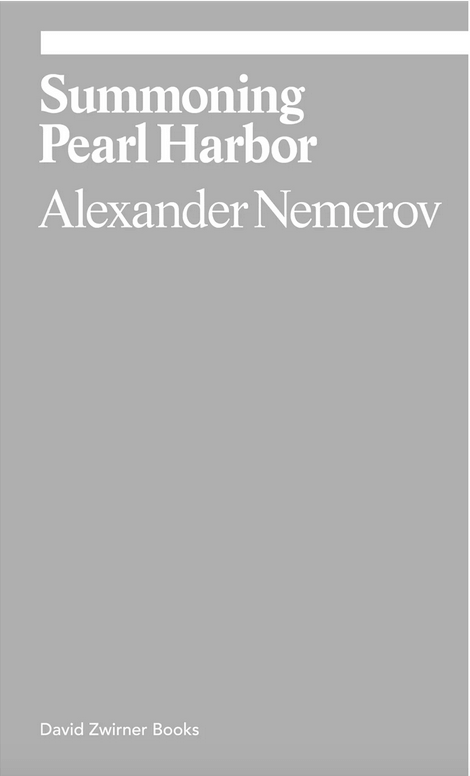
Summoning Pearl Harbor
Pages
96Format
PaperbackRelease date
2017Publisher
David Zwirner BooksWeight
2.5 ozSize
4 ¼ x 7 in | 10.8 x 17.8 cmEdition
ISBN: 9781941701652Summoning Pearl Harbor is a mesmerizing display of linguistic force that redefines remembering. How do words make the past appear? In what way does the historian summon bygone events? What is this kind of remembering, and for whom do we recall the dead, or the past?
In this highly original meditation on the past, renowned art historian Alexander Nemerov delves into what it means to recall a significant event—Pearl Harbor—and how descriptions of images can summon it back to life. Beginning with the photo album of a former Japanese kamikaze pilot, which is reproduced in this volume, Nemerov transports the reader into a different world through his engagement with the photographs and the construction of a narrative around them.
Through its lyrical prose, Summoning Pearl Harbor expands what we traditionally associate with ekphrastic writing. The kind of writing that can enliven a work of art is also the kind of writing that makes the past appear in vivid color and deep feeling. In the end, this timely piece of writing opens onto fundamental questions about how we communicate with each other, and how the past continues to live in our collective consciousness, not merely as facts but as stories that shape us. Here, Nemerov’s constant awareness of the power of language to make an experience—seen or remembered—become real reminds us that great ekphrastic writing is at the heart of every effective description.
Alexander Nemerov
Alexander Nemerov is department chair and the Carl and Marilynn Thoma Provostial Professor in the Arts and Humanities at Stanford University. Prior to joining Stanford, he was a professor of art history and American studies at Yale University. He has published several books and articles pertaining to the culture of American art dating from the eighteenth century to the 1970s. His writing often analyzes fiction and poetry alongside works of visual art.




